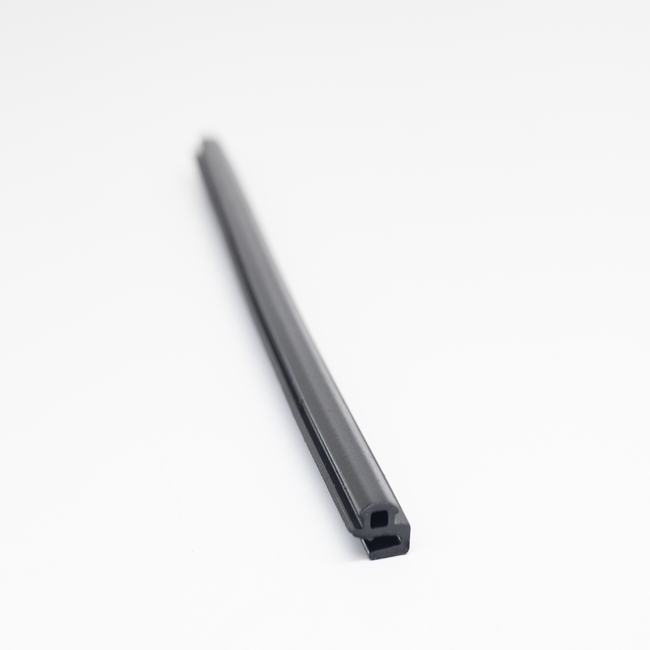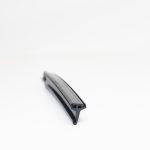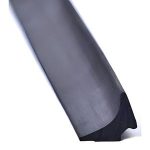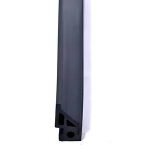EPDM (Ethylene Propylene Diene Monomer) rubber seals are widely used sealing components known for their exceptional weather resistance, durability, and flexibility. These seals are commonly utilized in a variety of applications and industries due to their ability to provide effective sealing against moisture, temperature fluctuations, UV exposure, and various chemicals. Here’s a detailed overview of EPDM rubber seals:
Key Characteristics of EPDM Rubber Seals:
- Weather Resistance: EPDM rubber seals are highly resistant to weathering, ozone, and ultraviolet (UV) radiation, making them suitable for outdoor and exposed applications. They maintain their integrity and sealing properties even when exposed to harsh environmental conditions.
- Chemical Resistance: EPDM rubber exhibits good resistance to a wide range of chemicals, including acids, bases, and some solvents. This chemical resistance makes EPDM seals suitable for use in industries where exposure to various chemicals is a concern.
- Temperature Tolerance: EPDM rubber seals have a broad temperature range, typically from -40°C to 120°C (-40°F to 248°F), though specific formulations can extend this range further. They remain elastic and maintain their sealing effectiveness over a wide temperature spectrum.
- Flexibility and Elasticity: EPDM rubber is highly flexible and elastic, allowing it to conform to irregular surfaces and provide an effective seal even in challenging or dynamic applications. This flexibility is especially valuable for gaskets and seals.
- Water and Steam Resistance: EPDM rubber seals are commonly used in plumbing and steam systems because they maintain their sealing properties when exposed to hot water and steam, making them suitable for both residential and industrial applications.
- Low Electrical Conductivity: EPDM rubber has low electrical conductivity, which is advantageous in applications where electrical insulation is required. This property is particularly useful in gaskets for electrical enclosures.
Applications of EPDM Rubber Seals:
EPDM rubber seals are utilized in various industries and applications, including:
- Automotive: EPDM seals are used in automotive components such as door seals, window seals, weatherstripping, and gaskets to provide weatherproofing, reduce noise, and enhance energy efficiency.
- Construction: They find applications in the construction industry for sealing doors, windows, roofing systems, and expansion joints to prevent water infiltration, maintain energy efficiency, and ensure structural integrity.
- HVAC Systems: EPDM rubber seals are employed in heating, ventilation, and air conditioning (HVAC) systems for sealing ductwork, joints, access panels, and HVAC equipment.
- Plumbing: EPDM rubber seals are used in plumbing systems, including pipe couplings, valves, fittings, and faucets, to create watertight seals and prevent leaks.
- Electrical Enclosures: They are commonly used in electrical enclosures and junction boxes to provide gasketing and environmental protection.
- Marine and Nautical: EPDM seals are suitable for marine applications due to their resistance to saltwater and UV exposure, making them valuable for sealing hatches, windows, and other marine components.
- Industrial Machinery: These seals are used in various industrial equipment and machinery, particularly in applications where resistance to chemicals and temperature extremes is necessary.
- Aerospace: In the aerospace industry, EPDM seals are used in applications such as aircraft door seals and gaskets for critical systems.
Installation Considerations:
- Proper surface preparation is essential for ensuring a secure and effective seal.
- Follow the manufacturer’s guidelines for the correct torque or compression level when installing EPDM rubber seals.
- Regular inspections and maintenance help prolong the lifespan and effectiveness of these seals.
In summary, EPDM rubber seals are versatile sealing components known for their resilience, durability, and resistance to environmental factors. They are widely used across industries to create effective seals in various applications, from automotive to construction and beyond.






